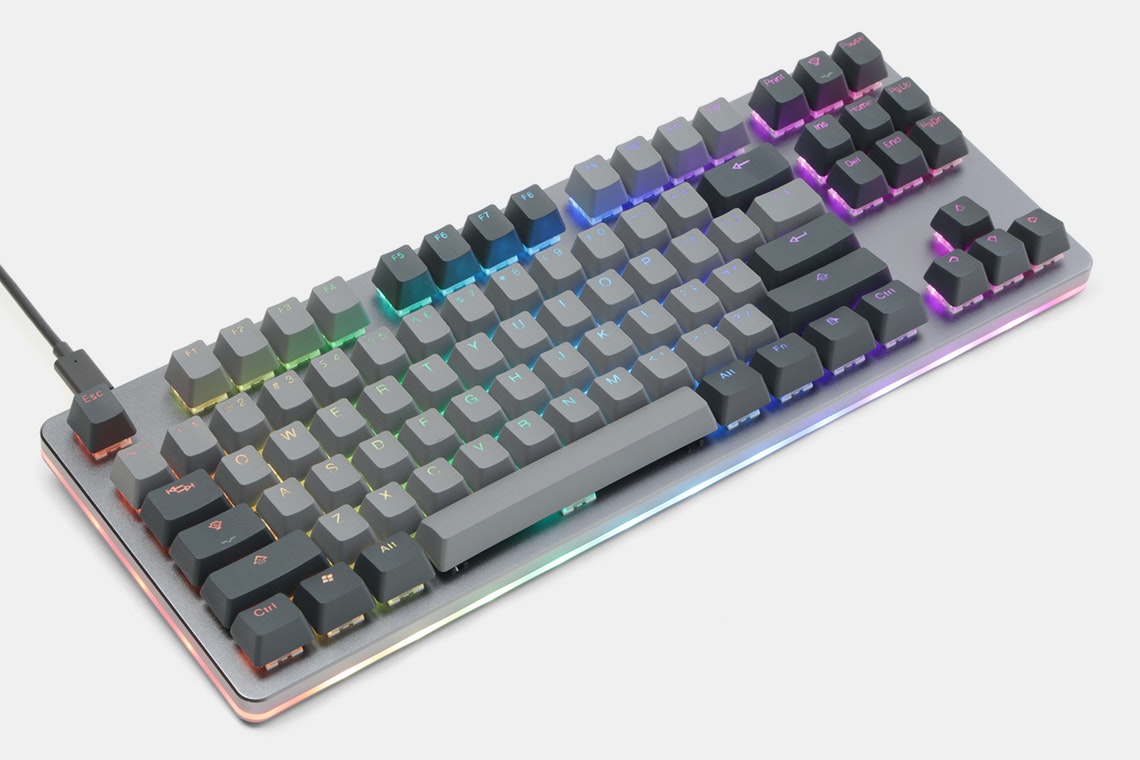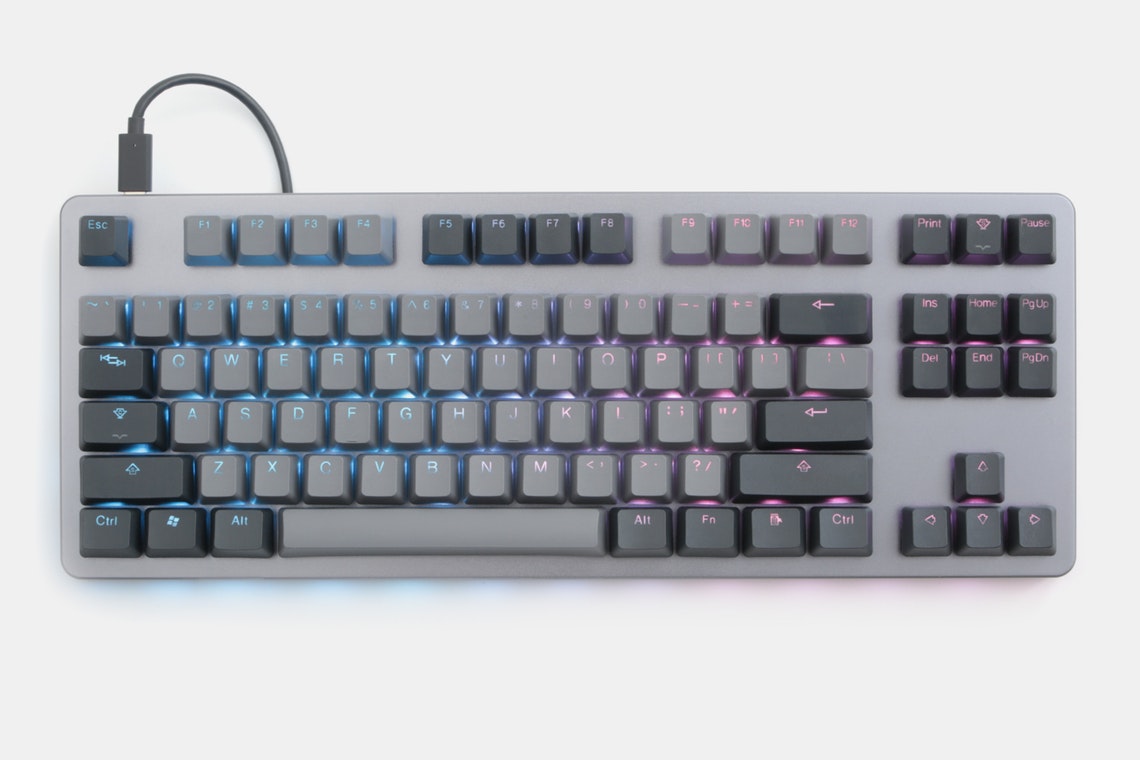Tom's Guide Verdict
Massdrop's latest keyboard appeals to both the gaming and productivity crowd.
Pros
- +
Hot-swappable switches
- +
Magnetic feet
- +
Solid PBT keycaps
Cons
- -
Expensive
- -
Missing productivity buttons
- -
Confusing firmware
Why you can trust Tom's Guide
Looking for a mechanical keyboard that looks as good in an office as it does in a gaming setup?
The Massdrop CTRL ($200) is a tenkeyless mechanical keyboard that straddles the line between productivity and play. The highlight of the CTRL is its hot-swappable key switches, which provide an effortlessly customizable keyboard experience.
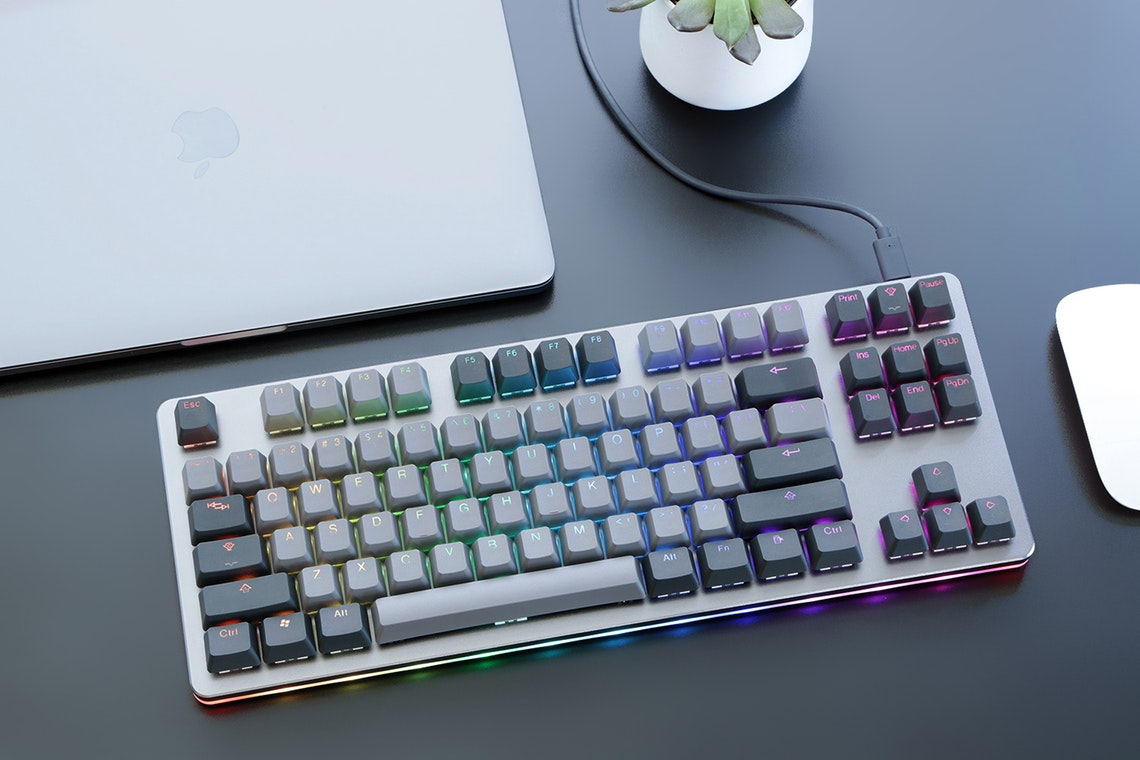
While I enjoyed the CTRL's quiet typing and smooth action, $200 for a tenkeyless device may turn off potential buyers. On the other hand, I have yet to find another keyboard that includes the numerous features or build quality of the Massdrop CTRL.
Design
Constructed with a solid anodized aluminum frame, the CTRL proved to be heavy enough to stand still as I typed articles, replied to emails and played some Quake Live. The keyboard looked subtle on my work desk, thanks to its sleek metal frame and my choice of a single-color backlight. There are plenty of customization options for both the exterior and interior of the CTRL. One of my favorite peripherals for the CTRL was its removable magnetic feet. These small magnets made a huge difference in adjusting the keyboard to my preferred height and inclination.
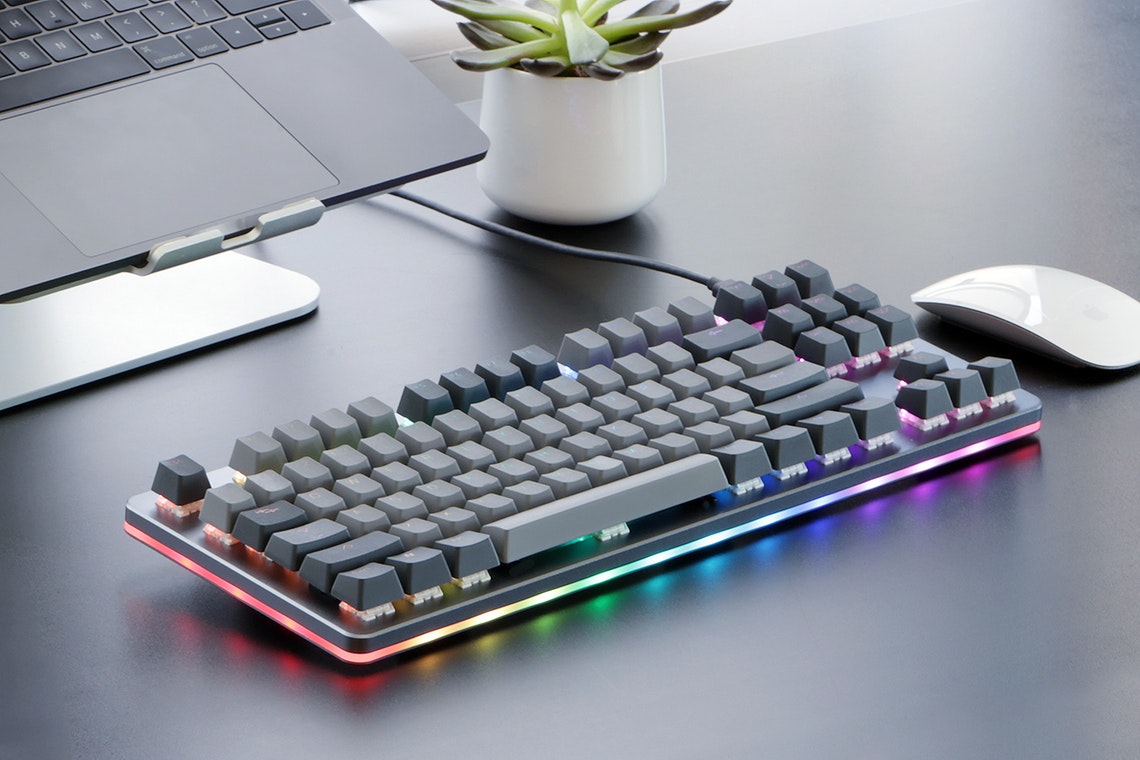
Massdrop claims that the CTRL is good for work or play. If this is a productivity keyboard, forgoing a number pad conflicts with Massdrop's claim as those keys are essential for data entry. Dedicated media keys join the numpad on the list of productivity shortcuts missing in action. For $200, this exclusion feels brazen compared with keyboards such as the Razer BlackWidow Lite. That keyboard makes the same concessions but at half the price.
MORE: How to Buy a Gaming Keyboard
Like many other premium keyboard models, the CTRL has a detachable USB cable, which makes transporting it a breeze, especially on daily trips. However, the CTRL does not have a carrying case, so those planning to travel with the keyboard will have to provide their own.
Keys
The CTRL I received employs Kailh Speed Silver switches, the brand's equivalent to the linear Cherry MX Speed (Silver) switches. The actuation distance is 1.3mm, 0.1mm greater than Cherry’s 1.2mm. I found typing on the linear keys smooth and quiet. The package came with a keycap puller, a switch puller and a 56-inch USB cable.
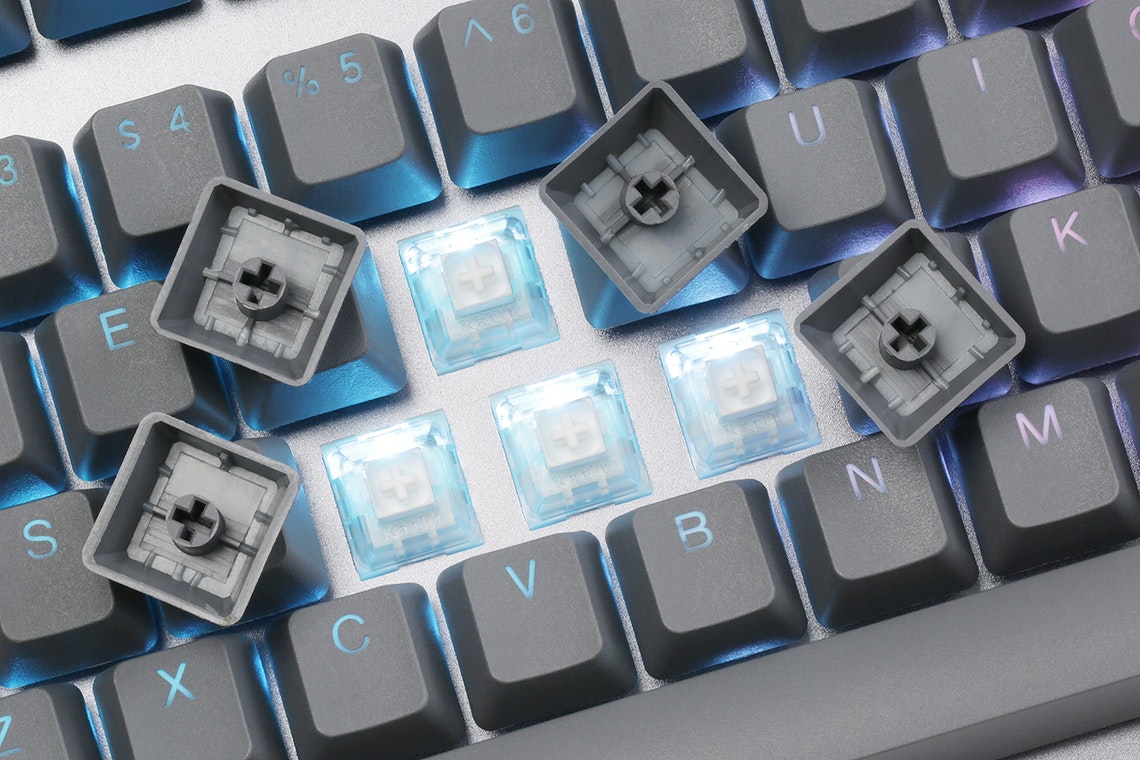
The CTRL's hot-swappable switch sockets soothe the sting of its asking price. This setup allows users to change switches at any time without the need for screwdrivers or solder. My setup arrived with linear Kailh silver switches. To see how easy it was to swap out key switches, I replaced my silvers with Kailh Blue clicky switches for a day. The effortless substitution is incredibly impressive, as it takes just minutes to swap out all the keys. You simply remove a keycap, then use a the switch puller to remove the component. Carefully placing a new switch into the socket, then replacing the keycap wraps up the process.
MORE: A Guide to Mechanical Keyboard Switches
With my usual membrane keyboard, I was able to get 60 words per minute on TypingTest.com with 100 percent accuracy. With the CTRL, I scored an improved 72 words per minute with 94 percent accuracy. The keys required way less energy to push down than I was used to, which was great for producing more content — at the cost of more typos.
Features
The CTRL is fully programmable via downloadable QMK firmware. This means you can assign macros or custom keybinds to every key. With customized bindings, you can use the keyboard for gaming, work or production shortcuts. Featuring customizable RGB backlighting and LED strip, the keys can put on a colorful show. You can also set them to a single color for a more subtle look. The LEDs operate at a frequency of 100 Hz, so I did not notice any visible flicker. Shine-through PBT keycaps helped resist the reflections that usually occur from oils and sweat.
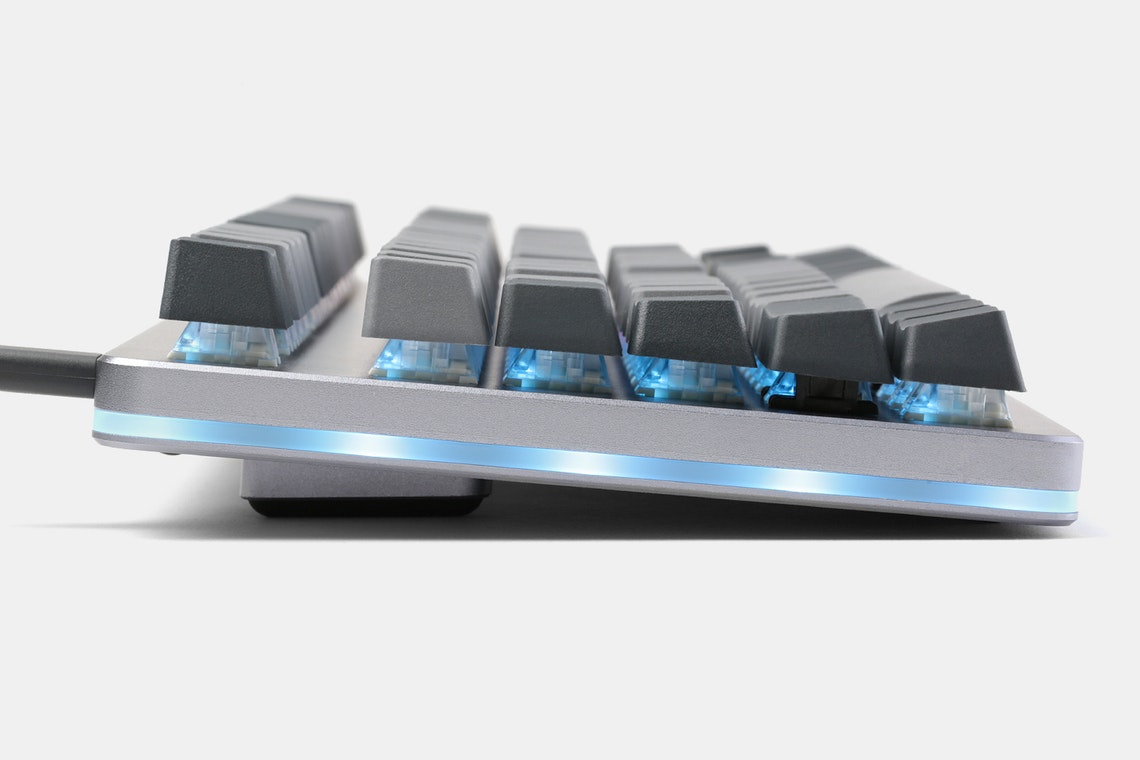
The keyboard comes configured with your choice of switches (Cherry MX, Kaihua or Halo), so you can get just the feel you like, whether you prefer something heavy and tactile, or lightweight and linear. With dual USB-C connectors on each side, the CTRL can transfer data and charge devices at USB 2.0 speeds. I tested this by transferring pictures to a LG V40 ThinQ phone.
Performance
For getting work done, the CTRL performed extremely well. I enjoyed the reduced pressure required to depress keys, and how quickly I could crank out words. When it comes to gaming, strafing through the map in Quake felt effortless. The subtle backlighting I selected proved to be unobtrusive. The keys were considerably more comfortable and responsive than the membrane model keyboard that I usually use.
MORE: Best Gaming Keyboards 2019
Bottom Line
Those in the market for a keyboard upgrade should take a solid look at the CTRL. While its asking price is a bit high, the ease of swapping out switches cannot be overstated. I have yet to come across another keyboard that uses adjustable magnetic footing for perfect sizing. For me, the lack of dedicated media keys is disappointing, but not a deal-breaker. Massdrop has a quick list of media key shortcuts on the included instructions, which I was able to get used to after a bit of practice.
If you prefer a fully equipped full-size option, you can sometimes find a Corsair K70 RGB Mk.2 for around $110. Aside from being almost half the price, the keyboard has media keys, a number pad and is crafted from the same premium materials and PBT keycaps as the CTRL. Otherwise, tenkeyless fans should find that the CTRL excels at both work and play, while offering a staggering amount of customization options.
If you need an alternative that's great for working from home (but can still handle some play) then the Logitech Ergo K860 keyboard is certainly up to the task.

Hunter Fenollol is a Senior Editor for Tom’s Guide. He specializes in smart home gadgets and appliances. Prior to joining the team, Hunter reviewed computers, wearables, and mixed reality gear for publications that include CNN Underscored, Popular Mechanics, and Laptop Magazine. When he’s not testing out the latest cooking gadgets, you can likely find him playing a round of golf or out with friends feeding his paycheck to a QuickHit slot machine. Hunter started his career as an intern at Tom’s Guide back in 2019 while in college. He graduated from Long Island University Post with a degree in Communications and minor in Advertising. He has been vlogging ever since the iPhone 4 took front-facing cameras mainstream.
